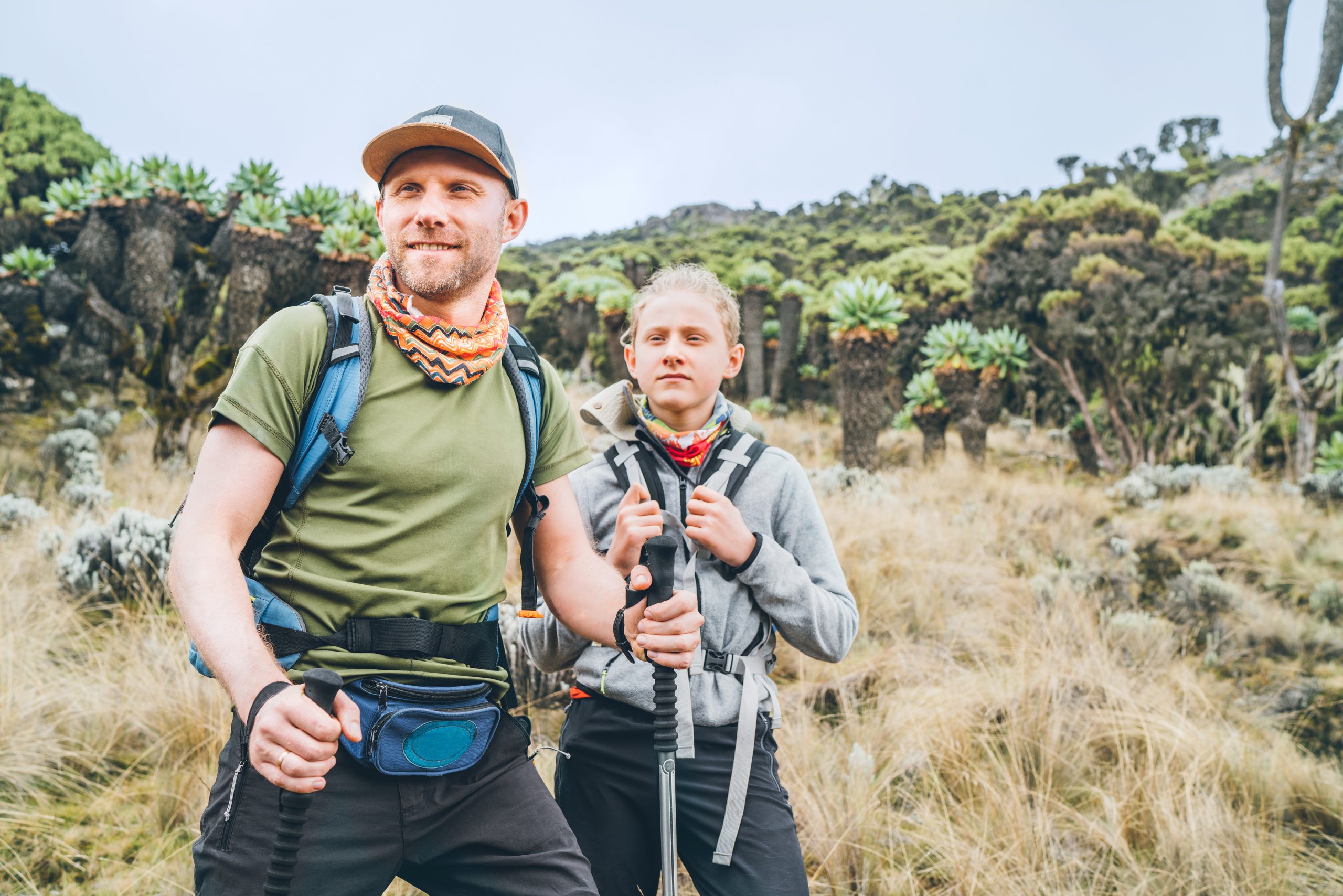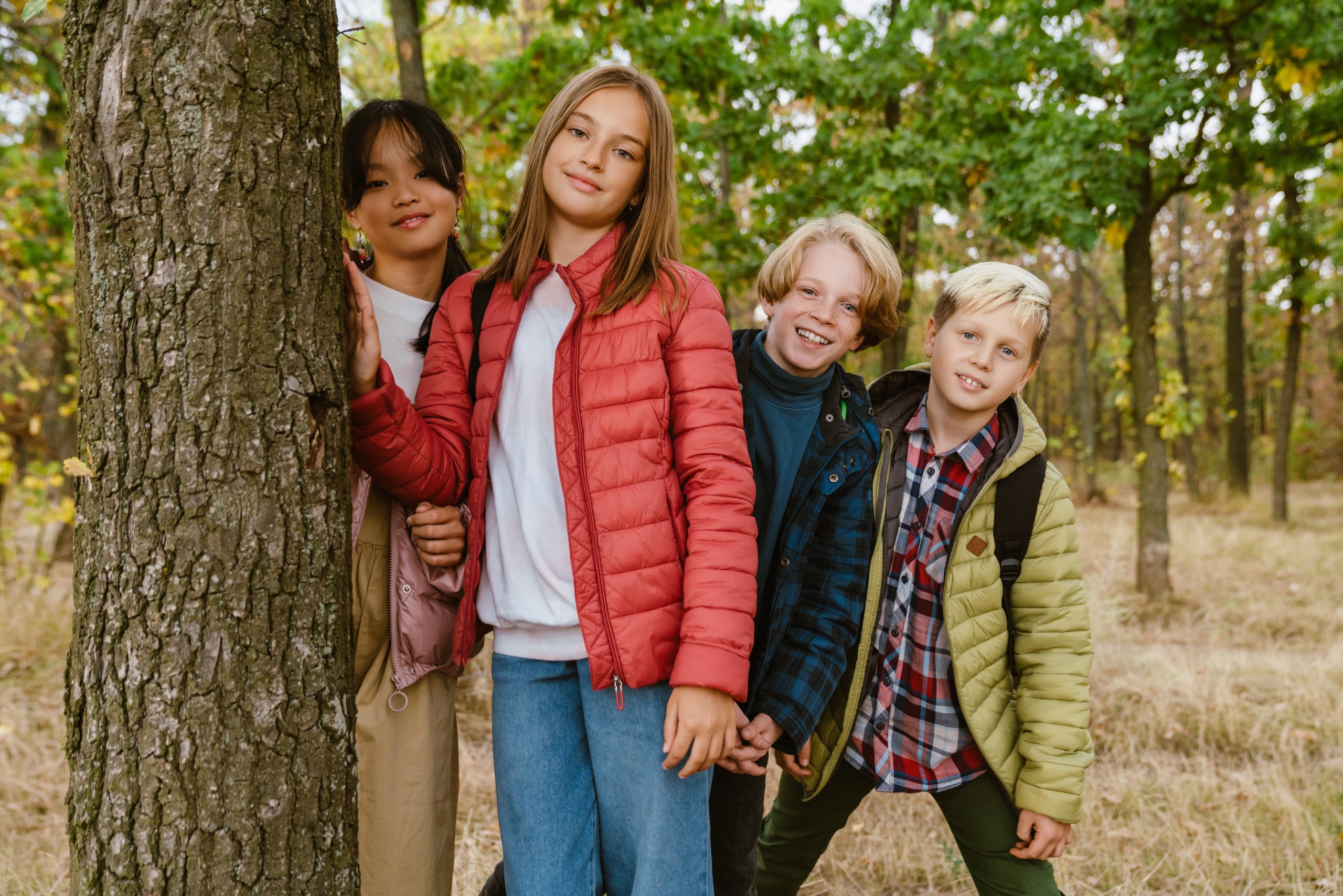
NOTHING’S IMPOSSIBLE!
It might seem outlandish to think that a child could successfully handle an adventure of this magnitude, however the youngest person on record to summit the highest mountain on the African continent was just six years of age. Although the current minimum age set by the Tanzanian National Parks Authority (TANAPA) requires a child be at least ten years old in order to attempt the climb to the summit, special permissions have been granted in certain circumstances.
GET TO KNOW YOUR YOUNG CLIMBER
Ultimately, your little adventurer’s success relies on you having a firm understanding of their capabilities, particularly when exhaustion and harsh conditions are factored in. Have they climbed mountains before? Can they hike between 5-10 miles in a day? Are they comfortable living out of a tent? How well do they handle adversity? These are all questions you’ll want to know the answers to.
If they’ve already climbed mountains, slept in a tent, and can handle walking big miles on little feet, you’re off to a promising start. If they’ve not yet had these experiences, it’s vital that they get them. Confidence is everything on a trek such as this, so do as much as you can to help them build it. Buy high-quality gear from head to toe and ensure they’ve been given every opportunity to figure out what works for them and what does not. Field test what layers keep them comfortable in a wide range of temperatures, and be prepared to manage that accordingly.
One of the biggest hurdles to climbing with children is maintaining a level head. Being able to set aside your own frustrations and communicate with your child through their low points is critical. Sometimes a little empathy and TLC is all the motivation they need to take that next step. Get them out as much as possible and get a feel for what they need and when they need it – and again, BUILD THAT CONFIDENCE! Furthermore, be equipped to deal with the things that pop up along the way, such as stomach aches, blisters, altitude sickness, and exhaustion. All of these challenges are probable on a climb of this nature, and having experience to draw from will greatly increase the likelihood of a favorable outcome.
Additionally, you’ll want to take note of what foods keep them moving and be prepared to manage their fluid intake. Though it might sound silly, and though Peak Planet does cover your meals while on the mountain, a special treat brought from home at just the right time might just be the difference between continuing on and turning back (this handy tidbit comes from a place of experience). Ultimately, your informed management of many singular moments along the trek will be the difference between making it to the summit and not.
PLANNING AND PREP
Because Tanzania and its infamous mountain are located near the equator, there are not four distinct seasons. Instead, there is a short and long rainy season, along with a short and long dry season. Optimal conditions exist during either of the two dry seasons, with January and February making up the shorter of the two dry seasons, while July through October constitutes the longer one. Climbing during either of these two seasons will improve your odds.
When it comes to route selection, it’s important to understand that the longer the duration of the ascent, the more time you and your precious cargo will have to acclimatize and adjust to waning oxygen levels. Peak Planet offers six different route options, ranging from 6 to 10 days in length, and will be happy to recommend one should you need assistance.

If you’ve gotten to this point and still feel confident your little go-getter is up to the task of summiting one of the world’s seven summits, you’ll next want to consult with their pediatrician, who will help you weigh the risks against any potential health concerns. Furthermore, you will need certain vaccinations to be current prior to leaving, and your pediatrician can help with that process as well.
As part of your shared mental preparation, learn about what a Kilimanjaro climb looks like together, both through research on Peak Planet’s website, and by watching personal accounts of the climb on YouTube, of which there are many. This inclusivity during the planning phase will help lay the foundation for a ‘team mentality,’ as well ease any concerns, and answer questions they may have. Once they see, for example, that Kilimanjaro requires zero technical climbing expertise and that you’ll hike through five distinct climate zones along the way, each with their own unique characteristics and wildlife, you’ll begin to some of that anxiousness give way to excitement.
As mentioned earlier, the physical aspect of your prep should include a great deal of “simulation training,” outside, walking, climbing, and tent camping. Plan safe hikes of various intensity levels at all different times of day (from early morning to late at night with headlamps, if possible) to help prepare for the types of scenarios you’ll encounter on Kilimanjaro. Peak Planet recommends at least 12 weeks of training prior to the start of your climb, but you do not need the fitness level of an endurance athlete or personal trainer to make it to the summit.
LOGISTICS
From most parts of the world, a lengthy itinerary is unavoidable, and with that comes the joys of jet lag and a period of adjustment to a new time zone, which can be daunting depending on where in the world you are coming from. Create a plan to adjust your sleep schedules prior to leaving home to help smooth this transition. A doctor or pediatrician may have some advice to offer on the subject, and there are innumerable resources online to assist with formulating the right strategy for you.
Maintaining hydration throughout travel can also greatly reduce the symptoms of jet lag, as well as eating healthy snacks at a regular interval. Oftentimes the inherent stresses of travel are exacerbated by the lack of access to water and healthy food, so planning ahead for this eventuality is worth your while.
Once you’ve finally touched down in Tanzania and the adjustment period officially commences, you may find it beneficial to have planned at least a couple of “buffer days” at the beginning of your trip to help mitigate some of those post-travel woes. A safari makes for a fantastic, low-key way to spend some of that time, and Peak Planet offers itineraries ranging from one to six days, which include park fees, meals, water, and accommodations.
IN SUMMARY
With a bit of tried and true experience under their belt, your little one is every bit as capable of climbing to the top of Kilimanjaro as any adult. Get them outside and comfortably outfitted, and watch them rise to the challenge. Include them in every phase of the planning, utilize every available resource on Peak Planet’s website and beyond, and keep an open line of communication to address their questions and concerns. Above all else, let them know you will be there for them every step of the way no matter what, and look forward to creating memories that will surely last a lifetime.


